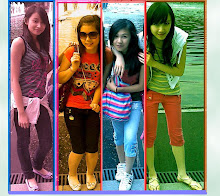-=Proteins=-

protein: a polymer constructed from a set of just 20 kinds of monomers called amino acids.
-are responsible for almost day-to-day fuctioning of organisms
-proteins form structures such as hair and fur, make up muscles, and provide long-term nutrient storage
-other proteins circulate in blood defend the body from harmful microorganisms
-act as signals, sending messages from one cell to another
-another group of proteins control chemical reactions in a cell
-=Amino Acids=-
definition: a monomer that makes up proteins
-consists of a central carbon bonded to four partners
-the difference about the each type of amino acid is the "side group" that attaches the fourth bond of the central carbon.
-the side group is responsible for the particular chemical properties of each amino acid
-=Building a Protein=-
polypeptide: chain of linked amino acids
-cells create protein by making polypeptides
-each link is created by a dehydration reaction between the amino group and the amino acid and the carboxyl group of the next amino acid
-proteins are composed of one or more polypeptide chains
-the body can make a variety of acids in different orders
-most polypeptides are at least 100 amino acids in length
-there is a very large number of possible polypeptides
-each protein has a unique sequence of amino acids
-=Protein Shape=-
-a protein in a single form of amino acids linked together cannot fuction properly
-a fuctional protein consists of one or more polypeptides precisely twisted, folded, and coiled into a unique shape
-some side groups form bonds with each other
-these forces help to fold a polypeptide and keep it folded
-a protein's shape is also influenced by the surrounding environment, which is usually aqueous
-water attracts hydrophillic side groups
-and rejects hydrophobic groups
-s0o...hydrophillic amino acids are on the outside edges of the protein while the hydrophobic amino acids are clumped in the center of the protein
denaturation: the loss of the normal shape protein due to heat, quality of the environment, or another factor
example: occurs when frying an egg (the egg white changes from a clear liquid to a white solid
-this is because the polypeptide chains became tangled with one another
-heating unfolds proteins because...
-most of the forces that keep the folding are weak attractions between pairs of side groups and between side groups and water.
-a protein's function depends on its shape so...
-if a protein loses it shapes (denatures) it won't be able to work properly :(
Concept Check
1. Give at least two examples of proteins you can "see" in the world around you. What are their functions?
Y0u can see the protein that forms fur which keeps animals warm and the protein that forms muscles which keeps the body strong and being able to move.
2.Relate amino acids, polypeptides, and proteins.
Cells create protein by making polypeptides, which are long chains of amino acids.
3.Explain how a heat can destroy a protein.
Heat can destroy a protein because most of the folding are weak attractions between pairs of side groups and between side groups and water. The hot molecules collide with enough force to overcome the weak attractions.
4.Which parts of an amino acid's structure are the same in all amino acids? Which part is unique?
One hydrogen atom, an atom in a carboxyl group and and an atom in an amino group are the same in all amino acids. The uniqueness of each amino acid if the side groups that attaches the fourth bond of the central carbon.

0 comments:
Post a Comment